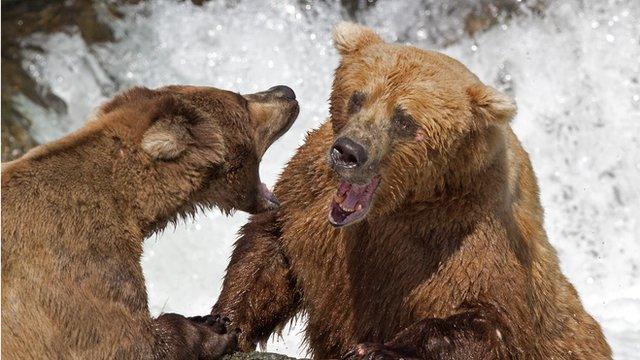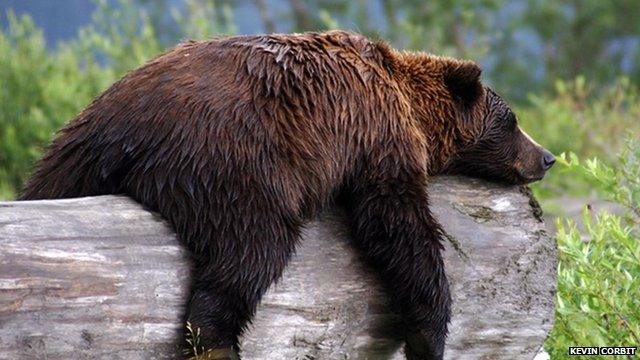Obese grizzly bears 'shed light on diabetes'
- Published

Grizzly bears become obese in the autumn in order to survive periods of fasting in winter months
A study of the hibernating habits of grizzly bears may shed light on a mechanism involved in diabetes.
Scientists examined the animals as they gained weight in order to survive winter fasts.
Charting their blood chemistry as their weight changed, researchers discovered they used a protein switch to control insulin - a key diabetes hormone.
Writing in Cell Metabolism, scientists say studying this process could one day pave the way for treatments in humans.
Diabetes is known to be more common in obese humans than those of normal weight and many theories suggest increasing weight may be in some way linked to the development of the disease.
Critical to type 2 diabetes (the most common form of the disease in adults) is the body's reduced production or response to insulin - a hormone that controls sugar levels in the blood.
Scientists hypothesised that grizzly bears - who tend to become obese in the autumn in order to survive several months of fasting during hibernation - need to deal with similar metabolic challenges to those faced by overweight humans.
They predicted the levels of insulin would change as their obesity levels varied over the year.

The bears were able to maintain tight control of their blood sugar levels
But examining 16 grizzly bears they found insulin levels did not fluctuate. Instead cells were able to switch on and off their ability to respond to the hormone.
Central to this process was a protein called PTEN. Researchers say it acted like a dimmer switch, making bears more or less sensitive to insulin when needed.
When bears woke up in spring they were able to ramp up the switch. becoming more sensitive to insulin.
Previous research in the New England Journal of Medicine showed people with genetic abnormalities of this protein became obese but remained protected from developing diabetes.
'Healthy obesity'
Researchers say they will now investigate large genetic databases to see whether similar mutations may predispose or protect people against the disease.
And they suggest PTEN may be a good starting point for future anti-diabetic drugs.
Dr Kevin Corbit, who led the study, said: "These processes which suggest a healthy state of obesity in bears, may seem counter-intuitive as we are used to using diseased humans as our reference.
"Maybe we need to look more closely at animals' natural responses to extreme environments."
Prof Brian Barnes, director of the institute of arctic biology at the University of Alaska Fairbanks, said: "It is exciting to see research being done on interesting comparative species, like grizzly bears, that have evolved adaptations to extreme conditions.
"This shows what is possible within the physiological and metabolic limits amongst mammals.
The research involved a collaboration between scientists at the biotechnology company Amgen Inc, Washington State University, and the University of Idaho.
- Published31 July 2014
